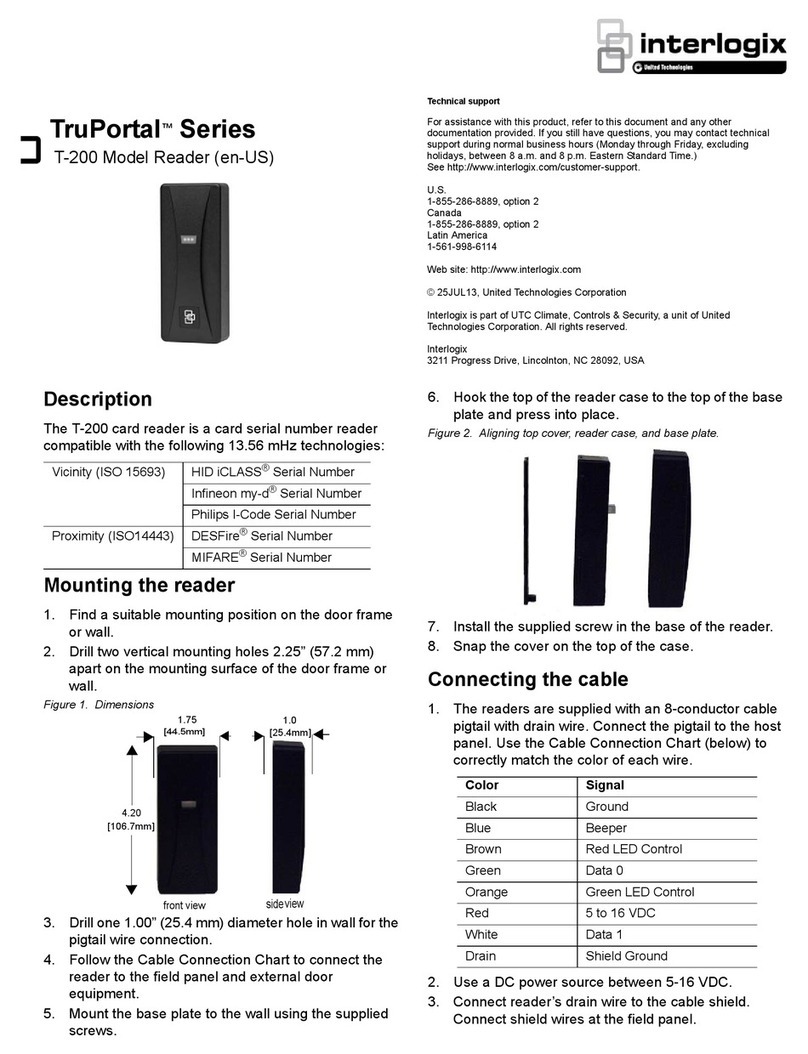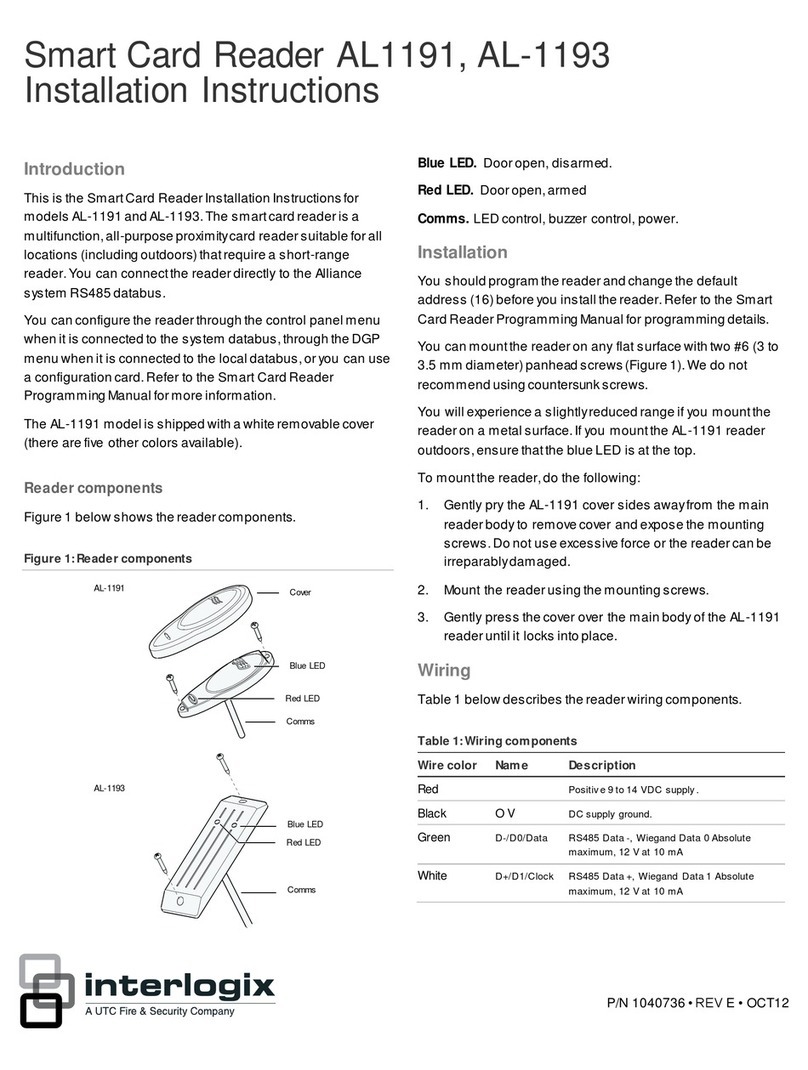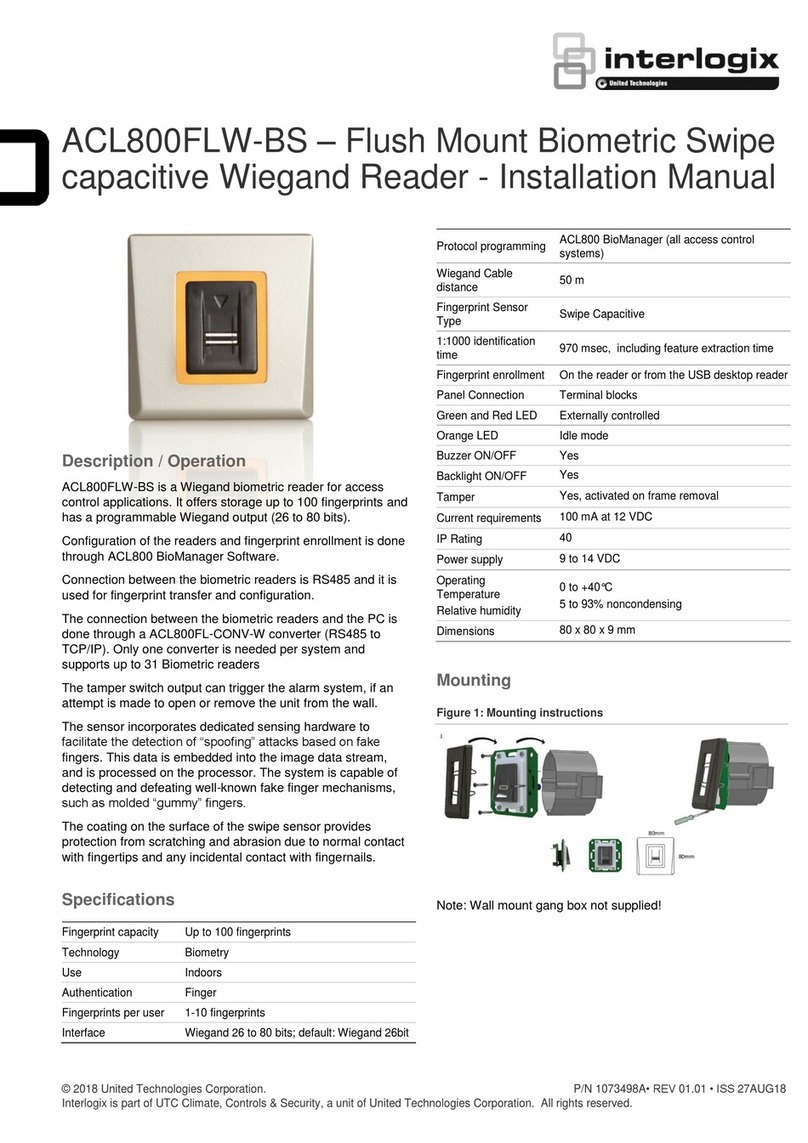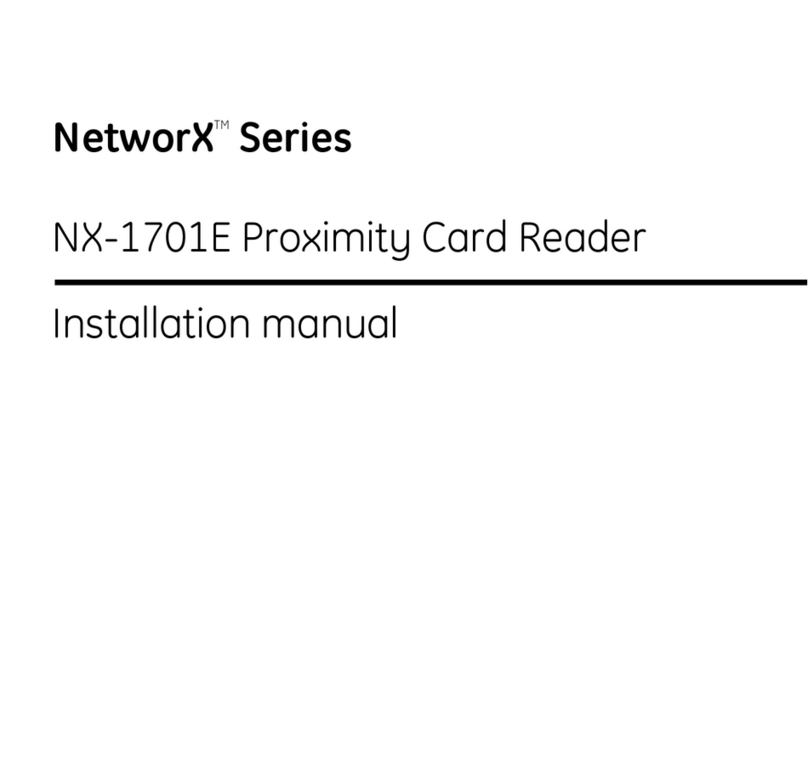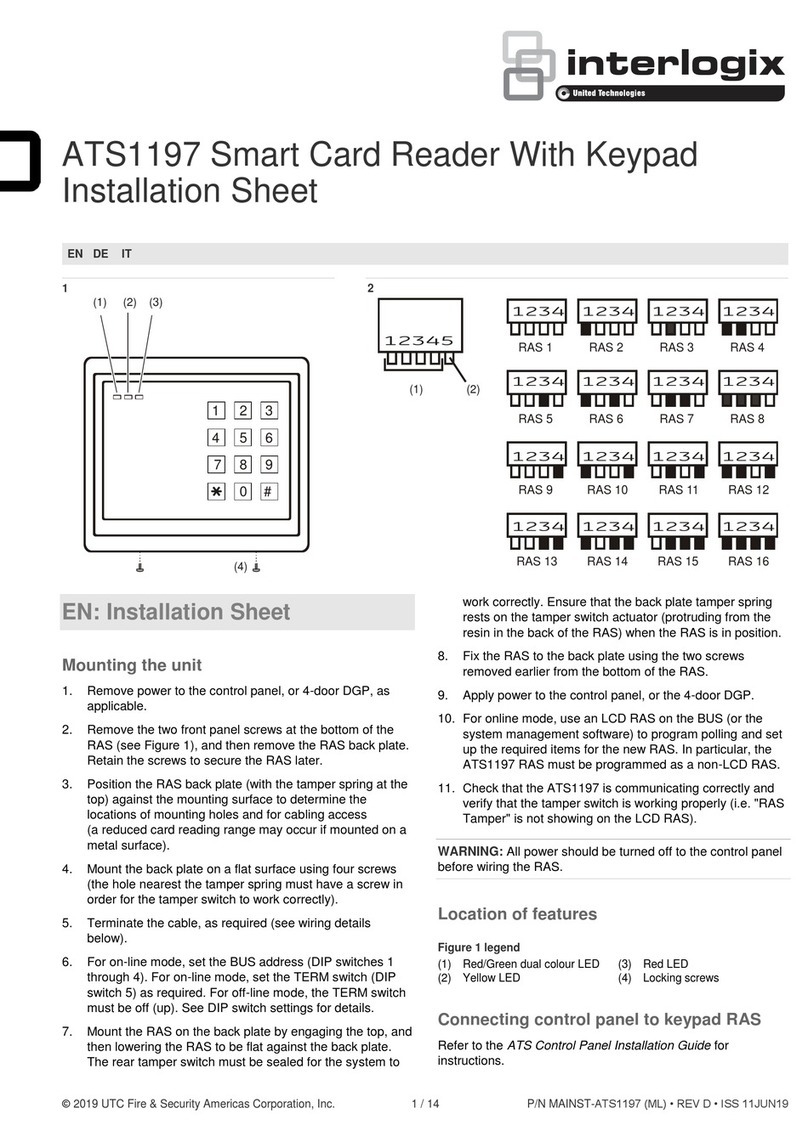NX-1700E Card Reader
8
Segment 2 Double Scan Function {Double Beep}
Program the functions that are performed when a card is scanned twice within the 2 Scan Hold Time {two beeps}. Location 244,
Segment 1 programs the length of time between beeps. The descriptions of the options are the same as for Single Beep Scan
Function. Default is 1.
Segment 3 Single Scan Hold Function {Triple Beep}
Program the functions that are performed when a card is scanned and held at the reader for the duration of the 2 Scan Hold Time
{three beeps}. Location 244, Segment 1 programs the length of time between beeps. The descriptions of the options are the same
as for Single Beep Scan Function. Default is 1.
LOCATIONS 1-240 RESERVED
LOCATION 241 PROGRAMMING THE X-10 ADDRESS FOR THE SCAN FUNCTIONS
(5 segments of numerical data)
Segment 1 Program a number from 0 -15 to represent the corresponding X-10 Module Number from the following table.
Default is 0.
Module 1 2 3 4 5 6 7 8 9 10 11 12 13 14 15 16
Seg 1 0 1 2 3 4 5 6 7 8 9 10 11 12 13 14 15
Segment 2 Program a number from 0-15 torepresentthecorrespondingX-10 House code fromthe followingtable.Defaultis
0.
X-10 ADDRESS CODES
0=A 4=E 8=I 12=M
1=B 5=F 9=J 13=N
2=C 6=G 10=K 14=O
3=D 7=H 11=L 15=P
Segment 3 Single Scan Function {Single Beep}
Program the X-10 function that is performed when a card is scanned {one beep}. This location only needs to be programmed if
Location 0, Segment 1, Option 7 is set. Use the following table. Default is 2.
Function # Function performed Function # Function performed
0 All units off 4 Dim
1 All lights on 5 Bright
2 On 6 All lights off
3 Off All others Reserved
Segment 4 Double Scan Function {Double Beep}
Program the X-10 function that is performed when a card is scanned twice within the 2 Scan Hold Time {two beeps}. Location 244,
Segment 1 programs the length of time between beeps. The descriptions of the function codes are the same as for Single Beep
Scan Function. This location only needs to be programmed if Location 0, Segment 2, Option 7 is set. Use the above table. Default is
3.
Segment 5 Single Scan Hold Function {Triple Beep}
Program the X-10 function that is performed when a card is scanned and held at the reader for the duration of the 2 Scan Hold Time
{three beeps}. Location 244, Segment 1 programs the lengthof time betweenbeeps. The descriptions of the functioncodes are the
same as for Single Beep Scan Function. This location only needs to be programmed if Loc 0, Seg 3, Option 7 is set. Use the above
table. Default is 2.
LOCATION 242 PROGRAMMING THE OPTIONS AND READER PARTITION
(4 segments of binary data)
Segment 1 System Options:
LED1 - "On" if reader is enabled for User Card Programming.
LED2 - "On" if optical tamper is enabled.
LED3 - "On" if reader buzzer is to follow typical keypad buzzing. (Default is “On”)
LED4 - "On" if ding-dong chime enabled (dependent on both Option 3 and chime being enabled).
LED5 - “On” if an RTE from a scanned card is to be logged as Code Entry. (Default is “On”)
LED6 - “On” if reader is in NX-1700E Legacy Mode (Default is “On”). Refer to note below.
LED7 - “On” if an RTE) from a zone or the Egress input is to be logged as Code Entry.
LED8 - “On” if LEDs to extinguish after 2 minutes without a scan. (Note: This option doesn’t disable the flashing green
LED during card programming.)
The card reader is defaulted to the “Legacy mode”. This mode uses the same scan method as previous NX-1700E card
readers. However, an alternative scan method is available by turningoff LED6 in Location242, Segment 1. Ratherthan
passing the card (scan) within range of the card reader, the card can be held at the reader foraspecifiednumberof beeps.
Example of Double Scan: Legacy mode -- Pass the card by the reader’s sensor, remove it from thesensor area,then pass
the card by the reader’s sensor once again. Alternative mode -- Hold the card at the card reader for a total of 2 beeps.
Refer to the Glossary on page 24.
IMPORTANT: If you have older models installed in the system without this enhanced feature, it could result in two
different methods of scanning at various readers.






